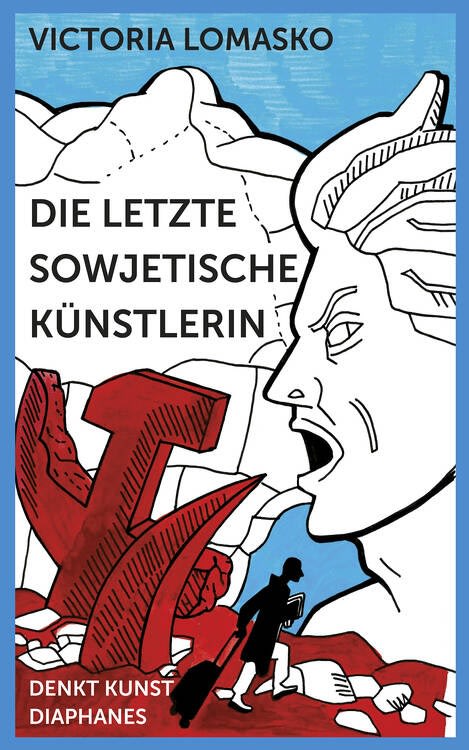17 April 2023 Victoria Lomasko explores the Soviet legacy through texts and drawings. Her new book with reports from Kyrgyzstan, Belarus and the Caucasus has now been published in German.
When Victoria Lomasko was traveling in the Russian republic of Dagestan in 2015, she experienced the legacy of the Soviet Union firsthand: a local writer in Kidero, who is fighting for attention to the forced resettlement of Dagestanians in 1944, is running walking through the rain to meet her and get his case through to Putin. "When it emerged that I have no ties to the President, even though I live in Moscow, he was visibly disappointed."
Perhaps it is experiences like these that prompted the Russian illustrator, who is now living in exile in Leipzig, to half-ironicly call her third reportage book The Last Soviet Artist (translated by Sandra Frimmel, Diaphanes, 288 p., 30 €) .
No matter where she is on her travels through the former Soviet republics of Kyrgyzstan, Armenia, Georgia, Dagestan, Ingushetia and Belarus, the memory of Russia's earlier influence is palpable everywhere.
Exactly investigating this legacy was the goal of the travels that the feminist artist undertook between 2014 and 2020. As in her other books, she does this in the form of graphic reportage, a mixture of text and comics. With its angular objectivity, Lomasko's highly stylized, two-dimensional style is even remotely reminiscent of socialist art.

Stalin-Stockholm Syndrome
Relations between different countries and Russia are complicated, as in Kyrgyzstan, where a law similar to Russia 's to prosecute so-called "foreign agents" was defeated in 2017 but is squarely with Russia on LGBTQI hostility.
The predominantly Muslim country is also one of the few former Soviet republics that have not banned Soviet symbols and monuments from public spaces. "Many communist core values come from the Koran," says a member of the Kyrgyzstan Communist Party.
The memories of the Soviet era are particularly vivid among older people, often in a kind of Stockholm syndrome: the Dagestani writer, who wants to draw attention to the injustice of the deportations, lets nothing come to Stalin: "My question, 'Why do you describe in your book the Stalin era as fair and the system as caring?" angered the author. "Could Stalin see how the deportation was going?"
More conservative than in Soviet times
The relationship to the Russian language is ambivalent: while in Armenia it is experienced as being imposed, in Kyrgyzstan it is valued as a lingua franca. But what almost all the countries we visit have in common is the oppression of women and LGBTQI people: family and patriarchy are paramount, girls are married off young and often have to serve their husbands' clans.
Honor killings are not uncommon in the North Caucasus, and female genital mutilation is still practiced in rural areas of Dagestan. In Armenia, too, women are considered second-class citizens: "The country ranks third after China and Azerbaijan in terms of sex-selective abortions ," says Lomasko.
The image of women in the Soviet Union was more progressive and some of the older people still remember it: "Only my grandmothers want me to go to school and they are happy when I wear short dresses," a Kyrgyz woman told Lomasko.
In the foreword, Lomasko talks about the images in Soviet children's books with which she grew up: "Caucasian mountains, Asian steppes, people in brightly colored robes and with fruit in their hands, and the most important, constantly repeated motif of fifteen children of different nationalities, who dance a dance together.”
Without saying it, Lomasko seems to give this completely outdated image a new meaning with her book: namely by traveling to these countries not as a colonizer, but as a cosmopolitan open-minded, listening to the local people and treating them with respect. It is as if a small spark of the communist ideals from her childhood are still alive in her and in her drawings.
Lomasko takes a curious and empathetic look at regions that neither Europe nor Russia care much about, and speaks to those in those countries who otherwise hardly have a voice. It's worth listening to them.

